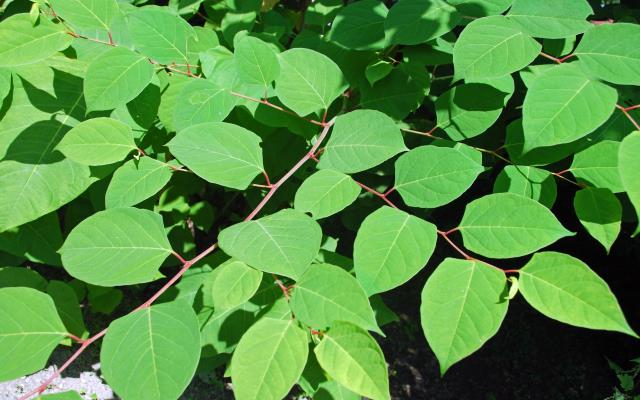It may be easy on the eye, but you won't be happy if you find Japanese knotweed (Fallopia japonica) growing on your property. Known for its ability to relentlessly overrun gardens, it's virtually resistant to removal by hand or by chemicals.
Japanese knotweed causes millions of pounds in damage to UK houses and public land each year, and can have a significant impact on home insurance claims. Here's how to identify and control this noxious pest.

How can I identify Japanese knotweed?
Also known as Japanese bamboo, it was imported from East Asia in 1825 as an ornamental plant and has been a veritable thorn in the side of property owners ever since.
Unless you're a gardening buff, Japanese knotweed can be hard to spot. It's a year-round nuisance and is common to all parts of the UK. There's no real way of preventing it, but here are some tell-tale signs to look for:
- Colour – Normally lush green leaves similar to fresh mint.
- Size – Leaves are usually 10 to 15cm long and the stems can reach up to 2.1m. It can be easily confused with hybrid or giant knotweed, which have larger leaves.
- Form – Flatter base than other types of knotweed, giving the leaves a shield-like shape.
- Stems – Like bamboo, and usually brown with distinctive purple flecks, often in a zigzag pattern.
Why is it bad for my house?
Japanese knotweed has deeply penetrating, creeping roots, which have been known to reach 3 metres deep underground. Because of this it contributes to the erosion of river banks, increasing the risk of flooding and damage to property. On the surface, it quickly outgrows other plants, blocking natural light and killing anything underneath.
Unfortunately, this plant thrives in the UK climate, which is why it's a homeowner's nightmare.
It grows very quickly, sometimes up to 20cm in a day, and can break through brick, tarmac or concrete paths and driveways.
Is Japanese knotweed damage covered by my home insurance?
The plant and its effects are well known to insurers, but you'll be hard pressed to find a policy that singles out Japanese knotweed damage as an insurance risk. In many policies you may be able to claim for the cost of controlling the plant, or repairing the damage it has caused to drains. If in any doubt, check with your insurer about what you're covered for.
If you do find the knotweed on your property, do try to treat it as any long-term damage probably won't be covered by your home insurance.
Are there any exceptions where I won't be covered?
Although extremely rare, there's still a grey area surrounding cases where the knotweed actually grows into your house – this tends not to be covered by most household insurance policies.
If you suspect you have it on your property or see it growing next door, it's best to let your insurer know. Some insurers may choose not to offer you a quote if you have knotweed and haven't made any attempts to treat it.
How can I treat it?
Although it's not illegal to have it on your property, you should make every effort to control Japanese knotweed and stop it from spreading in your neighbourhood.
In 2016 the University of Swansea completed 5 years of research into tackling the invasive Japanese knotweed. A team of bioscientists looked at all 19 of the main physical, chemical and integrated methods of controlling the plant in this country.
Regrettably for homeowners, they found that the single application of a herbicide in just one year did not eradicate the plant. And digging it out a was also a fruitless task, as it's very difficult to completely remove the root. Plus it's illegal to dispose of it with your other garden rubbish.
But the long-term use of a glyphosate herbicide offered some hope of control, if not eradication. Applied sometime from summer to late autumn when the plant is biologically vulnerable, above and below ground, and repeated over a period of 3 to 5 years, then glyphosate was the most effective treatment.
The work should be done by a professional company, not least because poor workmanship could lower the value of your home and affect your chances of selling. Some lenders may refuse a mortgage if the destructive weed is found on your property.
For further advice on Japanese knotweed and other invasive species, visit the Royal Horticultural Society.
What if my neighbour has it?
Japanese knotweed can spread from one property to another, so to avoid a neighbour dispute suggest they can get professional advice and treatment to control it.
If they don't make any effort to do so, you can take up the issue with your local council. They then have the power to hand the owner of the property a community protection notice if they don't think enough has been done to resolve the problem.
If you're looking to add a little more protection for your home, why not take a look at our buildings insurance options today.
Author: The AA. Published 4 May 2017. Updated 27 April 2018.
